Refer to the exhibit.
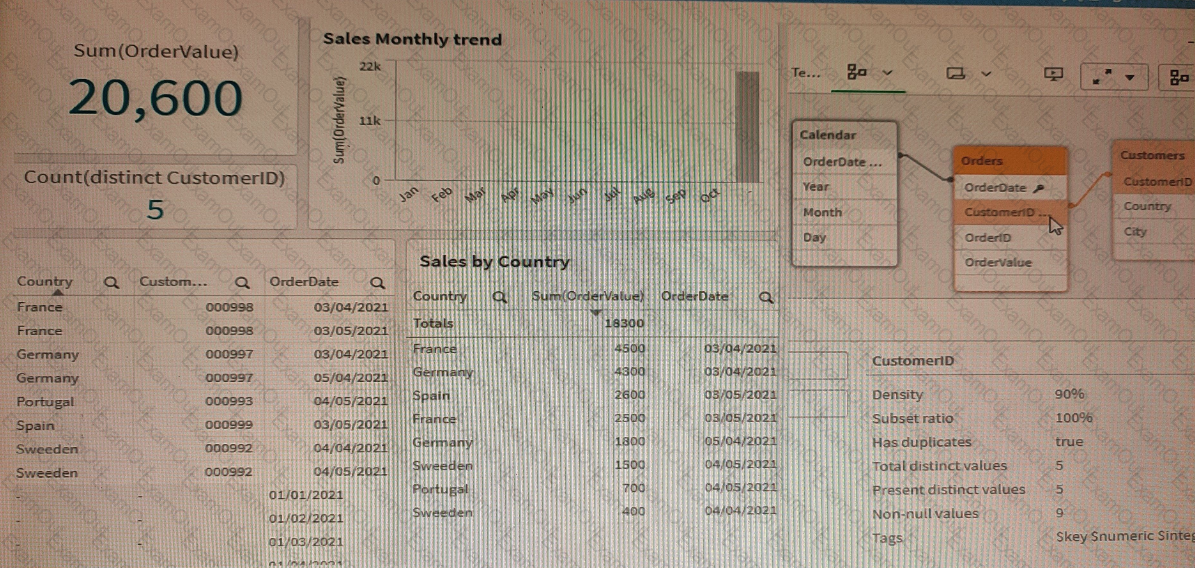
A data architect is working with an app and creates some visualizations to check the data. Some visualizations show issues in the data set.
*The Sales by Country table shows a total OrderValue of18,300 sales while the KPI shows a total OrderValue of 20,600.
*The Sales monthly trend bar chart does not work with the Month field.
Which two data issues should the data architect fix in the app? (Select two.)
A data architect wants to combine data on presentand historic sales performance.The historic data is stored in a de-normalized archive, and the present data is maintained in a database. The output must be contained in a single table.
Which script should the data architect use?
A)
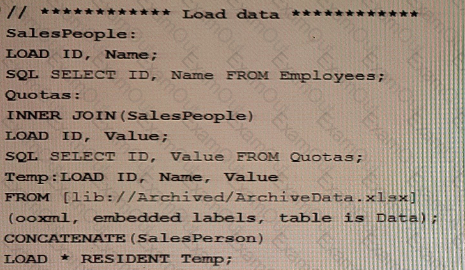
B)
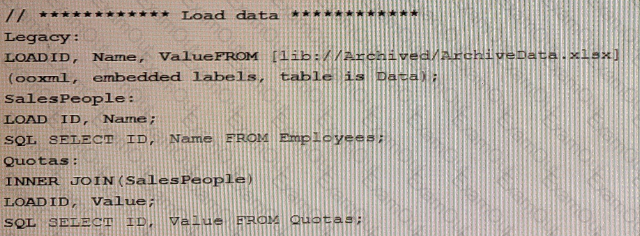
C)
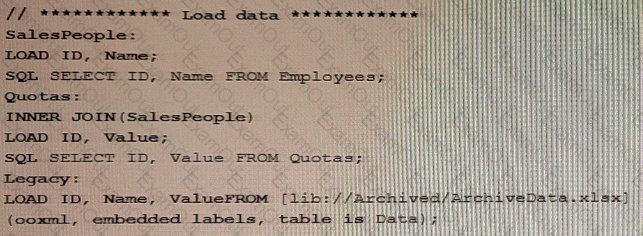
D)
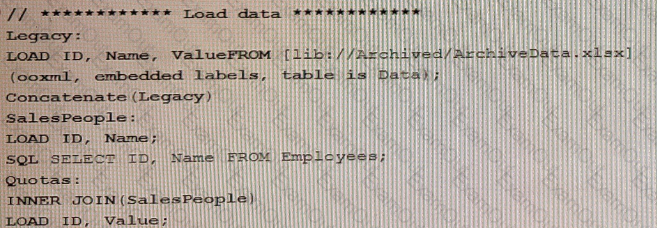
Adata architect needs to efficiently prepare a data model for a meeting in an hour.
The data source to be used contains five date fields The app needs to display sales trends and compare the current year to date (CYTD) to last year to date (LYTD) The app is NOT going to be published It will only be used for this meeting and a single user's ad-hoc analysis.
What should the data architect do to meet these requirements?
A data architect needs to develop a script to export tables from a model based upon rules from an independent file. The structure of the text file with the export rules is as follows:

These rules govern which table in the model to export, what the target root filename should be, and the number of copies to export.
The TableToExport values are already verified to exist in the model.
In addition, the format will always be QVD, and the copies will be incrementally numbered.
For example, the Customer table would be exported as:
What is the minimum set of scripting strategies the data architect must use?
Users of a published app report incomplete visualizations. The data architect checks the app multiple times and cannot replicate the error. The error affects only one team.
What is the most likely cause?
Refer to the exhibit.

A data architect needs to add a Budget table to the current Qlik Sense app. A Budget table with the fields Budget, CustomerlD, and ProductlD is loaded into the model. What will be created?
A data architect needs to develop multiple apps for various departments.More departments are requesting apps over time The company uses specific requirements for the number interpretation variables (e.g., ThousandSep, DecimalSep) found at the beginning of a LOAD script.
The data architect wants to reduce duplicate scripts but does not want to copy and paste the number interpretation variables each time new app is created.The data architect prefers to use the least amount of script in Qlik Sense.
How should the data architect meet these requirements?
Refer to the exhibit.
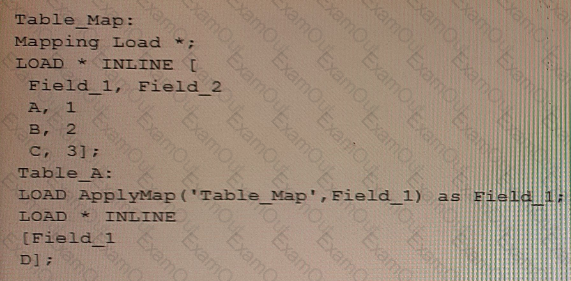
A data architect executes the script.
What will be the value of the first row for Field_1?
Multiple department fields in a dataset require a description
A data architect needs to add the department descriptions or a default value when the department does NOT have a description
Which strategy should the data architect use to meet these requirements?
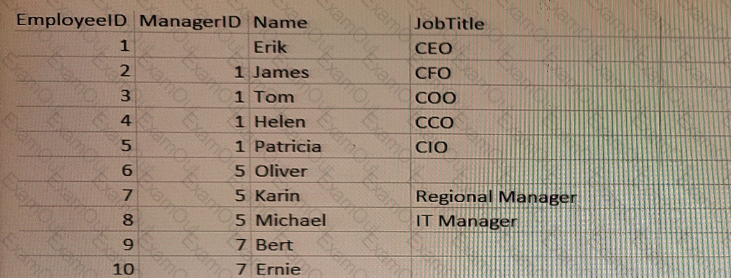
A Human Resources Director needs an app to analyze organizational structure. The Directory is particularly interested in the longest levels of line management.
Two table loads are required. Both use the same basic structure.
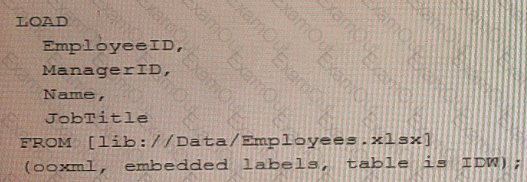
Which two table load prefixes are needed?

